Health Issues
Affective Development
Affective development is the development of emotions as well as their outward expression that begins in infancy and progresses throughout adolescence. It encompasses the awareness and discernment of one's emotions as well as those of others, the ability to connect emotions to those of others, to display emotion, and to manage one's own emotions.
Agility

Agility is the ability to efficiently move and change the direction and the position of the body quickly in a controlled manner. This requires the integration of a combination of skills, such as balance, coordination, reflexes, speed, and strength.
Attention Deficit Disorder
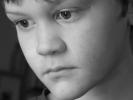
Commonly known as Attention Deficit Disorder (ADD), this condition has the "official" clinical name of Attention Deficit Hyperactivity Disorder (ADHD). It is estimated that between 3 and 5 percent of children in the United States meet the criteria of Attention Deficit Disorder.
Autism

Autism and autism spectrum disorder (ASD) are both general terms for a group of complex disorders of brain development. These disorders are characterized in varying degrees by difficulties in social interaction, verbal and nonverbal communication, and repetitive behaviors.
Body Awareness
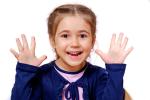
Body awareness is the knowledge of a person’s body parts along with the knowledge of what the parts can do and how to make the parts move. Body awareness helps people orient their bodies to their surrounding environment and helps them navigate through that space.
Brachiation
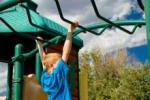
Defined as locomotion accomplished by swinging by the arms from one hold to another, brachiation is the action used to maneuver overhead playground equipment. Skills developed from brachiation include building strength, endurance, and flexibility as well as eye-hand coordination, visual distance perception, and balanced locomotor patterns.
Bullying
Bullying has been defined as a type of aggressive behavior that causes distress or harm, demonstrates an imbalance of power, and is repeated over time. There are three major forms of bullying: physical, emotional, and verbal.
Challenge
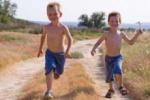
Children love a challenge. They enjoy the sense of mastery over their body and its emotions, especially fear. As they play, they test their abilities, giving themselves new goals and challenges to master. Mastering challenges results in giving children a sense of personal power and a satisfying feeling of accomplishment.
Cognitive Development
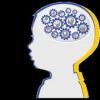
Cognitive development is a natural mental process of growth of perception, memory, judgment, reasoning, and other conscious intellectual activity.
Competition
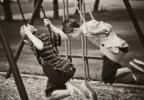
Competition is rivalry for supremacy, which may result in a prize, honor, or advantage. Competition is about winning and losing; if someone wins, then one or more children lose. Competition is a learned behavior.
Concrete Operational Stage
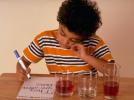
The concrete operational stage is the third of four stages proposed by Jean Piaget to describe the cognitive development of infants, children, and adolescents. The concrete operational stage typically involves children from ages 7-12.
Confidence

Confidence can be defined as the belief in the powers, trustworthiness, or reliability of a person or thing. A confident child displays a belief in his own abilities. Confidence is developed over time as he learns to trust himself. Both internal messages and external feedback from others play an important part in developing confidence.
Cooperation
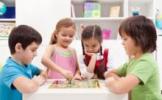
Cooperation is the act of working together for a common purpose. Cooperation is a learned behavior that can be improved and modified, which is especially developed during childhood.
Coordination
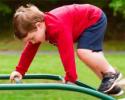
The definition of coordination is the ability to develop patterns of movement efficiently integrating visual information with the movement of the limbs. In children, coordination of motor skills develops as the child ages and experiences new activities.
Directional Awareness
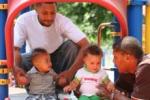
Directional awareness is one of many perceptual motor skills that children learn as they become mobile. Motor skills are combined with perceptual, sensory skills, such as visual, auditory, and tactile abilities, to develop increasingly complex behaviors.
Emotional Development

Emotional development refers to the ability to recognize, express, and manage feelings at different stages of life and to have empathy for the feelings of others. Emotional development is largely affected by relationships with parents, siblings, and peers.
Empathy
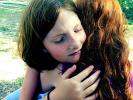
Empathy is an emotion that can be defined as knowing what another is feeling, feeling what another is feeling, and responding compassionately to another's distress. Prosocial behaviors, such as helping, sharing, and comforting others illustrate the development of empathy.
Endurance
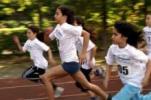
Endurance is defined as the ability to continue despite fatigue or difficult conditions. The stamina to perform physical activities for longer periods of time can be improved by exercise and increasing the amount of activity. This will result in developing stronger muscles, reducing body fat, and lessening the risk of developing diabetes or high blood pressure.
Equilibrium

Equilibrium is the state of balance acquired when contending forces are equal. The "sense of equilibrium" involves having a sense of security when standing, walking, or performing any movement. A number of factors are involved in equilibrium of the body, including visual cues, tactile kinesthetic sensations, and vestibular (inner ear) stimulation.
Executive Function

The ability to think and control emotions is called executive function. As young children learn to order their thoughts, process information, remember details, and focus on tasks amid distractions, they are developing their executive function skills.
Exercise

Physical exercise is the performance of some activity in order to develop or maintain physical fitness and overall health. For children, exercise is playing and being physically active. The American Heart Association recommends that children have at least 60 minutes of moderate to vigorous physical exercise every day.
Eye-Hand Coordination

The ability of the vision system to coordinate the movement of the hands to perform a task is called eye-hand coordination. Children's eye-hand coordination skills improve as they play with toys, blocks, puzzles, and balls.
Fear

Fear is a distressing response to a perceived danger, whether real or imaginary. Physical responses to fear may result in an accelerated heart rate and breathing, sweaty hands, nausea, headaches, stomach aches, and nervous movements. Emotionally, children may become clingy, impulsive, or distracted, and they may suffer from disturbed sleep patterns.
Fitness

Good physical condition is how fitness is measured. Good physical fitness occurs through healthy habits which include exercise and nutrition. Being physically fit offers many benefits, such as a healthy weight, strong muscles, bones, and joints, decreased risk of developing type 2 diabetes, better sleep, and a feeling of well-being.
Flexibility

Flexibility refers to the body's ability to effectively bend and move without injury. Improving flexibility allows the body to increase the range of motion at a particular joint as well as improving bone, ligament, and joint stability. Flexibility can be improved with stretching. Children develop their flexibility naturally through play.
Formal Operational Stage

The formal operational stage is the last of four stages proposed by Jean Piaget to describe the cognitive development of infants, children, and adolescents. The formal operational stage occurs with children from 12 years into adulthood. Emerging abstract thought and hypothetical reasoning mark this stage of cognitive development.
Fundamental Movement Phase
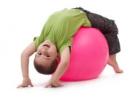
Children move through a developmental progression in the acquisition of motor skills. There are four phases of motor development: the reflexive movement phase, the rudimentary movement phase, the fundamental movement phase, and the specialized movement phase. The fundamental movement phase occurs between the ages of 2 and 7 as children gain control over their gross motor and fine motor skills.
Grip

Grip is defined as the act of grasping and holding fast. Boys and girls have approximately the same grip strength until the age of 10 years, when boys' grip strength becomes increasingly stronger than girls. Left-handed children tend to have equal strength in both hands, while right-handed children are significantly stronger in their dominant hand.
Health

The World Health Organization has defined health as "a state of complete physical, mental and social well-being and not merely the absence of disease or infirmity." Health has many determining factors, such as social, economic, and physical environment as well as the person's individual characteristics and behaviors.
Heart Rate

The heart rate is the number of rhythmic contractions, beats per minute (bpm), of the heart. This rate is used as a measure of cardiac activity. The normal heart rate should be strong and regular without any missed beats. Measuring heart rate is an effective way to determine the overall fitness of a person as well as the presence of any medical concerns.
Joint Attention

Joint attention occurs between two people who share an interest in an object or an event and there is an understanding between the two that they are both interested in the same object or event. Young children’s ability to engage others and communicate socially using non-verbal cues such as pointing, smiling, and eye contact is crucial to the development of social and language skills.
Lower Body Strength

Lower body strength is the ability of the body to exert a maximum force against an object external to the body in one maximum effort of the lower body muscles. The muscles that make up the lower body are the large, strong muscles that allow us to get around. Children do much to enhance their lower body strength by engaging in daily active play, such as running, jumping, climbing, and bicycling.
Mobility

Mobility is the state of being in motion. In children, mobility progresses from crawling as babies to a host of movements, such as walking, running, jumping, and climbing. It takes coordination to develop patterns of movement by integrating visual information with the movement of the limbs.
Motor Skills

Motor skills refer to the development of motor control, precision, and accuracy in the performance of both fundamental and more complex movements.
Obesity
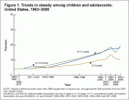
Childhood obesity is a serious health condition that occurs when a child is well above the normal weight for his age and height. The trend for increased childhood obesity rates is especially troubling, because the extra weight on children often leads to increased risk of health problems that were once primarily confined to adults.
Peer Pressure

Peer pressure occurs when an individual experiences persuasion to participate in the same activities as those in their peer group, or to adopt similar values, beliefs, and goals as the group. For a child, their peer group is usually, but not always, of the same age group.
Perceptual Motor Skills
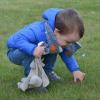
Perceptual motor skills refer to a child's developing ability to interact with his environment by combining the use of the senses and motor skills. This is viewed as a combined process where visual, auditory, and tactile sensory abilities are combined with emerging motor skills to develop perceptual motor skills.
Physical Development

Physical development refers to the physical and biological changes that occur in humans between birth and adolescence. As a child grows and changes, he increases his ability to explore and interact with the world around him.
Physical Education
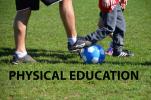
Physical education is an educational process of learning to develop specific knowledge, skills, and understanding to promote physical competence. The basic aim of physical education is to set aside daily a portion of the school day devoted to large-muscle activities that increase movement skills, enhance physical fitness, and positively influence the cognitive and affective development of children.
Preoperational Stage
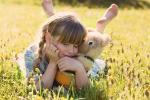
The preoperational stage is the second of four stages proposed by Jean Piaget to describe the cognitive development of infants, children, and adolescents. The preoperational stage (ages 2-7) moves from toddlerhood through early childhood.
Proprioception

Proprioception is an automatic sensitivity mechanism in the body that sends messages through the central nervous system relaying information to the body about how to react to stimuli and with what amount of tension. The muscles, joints, and connective tissues contain specialized sensory receptors that enable the body to process the information and turn that information into action.
Reflexive Movement Phase
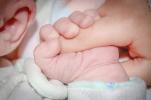
Children move through a developmental progression in the acquisition of motor skills. The reflexive movement phase ranges from birth to about 1 year. Reflexes are involuntary movements, and through this reflex activity the infant gains information about his immediate surroundings.
Risk Taking

Children encounter risks on a daily basis and are engaged in an intense learning process about life's risks and uncertainties. Risk involves the chance of an adverse outcome, which could result in injury. Minor scrapes and bruises are a natural result of the very nature of play. They help children "learn from experience" and gain an understanding of the consequences of their actions as well as the extent of their abilities.
Rudimentary Movement Phase

The rudimentary movement phase ranges from birth to about age 2. It includes the basic motor skills acquired in infancy: reaching, grasping, and releasing objects as well as sitting, standing, and walking.
Self-Esteem
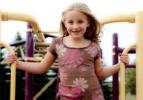
Self-esteem can be defined as what a person's unconscious believes to be true about his value, worthiness, and competence. Messages received from others are unconsciously accepted as facts no matter how legitimate or based in reality they are. Therefore, one's self-esteem is continuously constructed and reconstructed by others' verbal and non-verbal messages.
Self-Regulation

Self-regulation is the ability to control and manage one's own thoughts, feelings, and actions. For a child, good self-regulation can be demonstrated simply by raising his hand when asking a question in class or in a more complex way by controlling his feelings when angry or frustrated.
Sensorimotor Stage
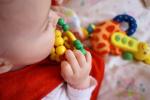
The sensorimotor stage is the first of four stages proposed by Jean Piaget to describe the cognitive development of infants, children, and adolescents. The sensorimotor stage typically describes children’s cognitive development from birth to 2 years of age.
Sensory Development

The interaction of the mind and the body comes through the experiences of the senses. Countless amounts of sensory information enter the brain all the time from not only the eyes and ears, but also from every area of the body. The brain organizes and integrates all of these sensations to help the person function normally.
Sensory Processing Disorder
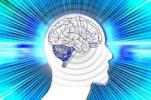
The way the nervous system receives messages from the senses and turns them into appropriate motor and behavioral responses is referred to as sensory processing. Sensory input is received and understood through sights, sounds, touch, tastes, smells, movement, balance, body position, and muscle control.
Social Development
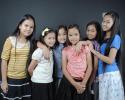
Social development involves learning the knowledge, skills, and values that enable children to relate to others effectively. The ability to get along with others and adapt to new situations is referred to as social competence.
Spatial Awareness
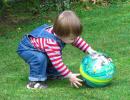
Spatial awareness is the knowledge of how much space the body occupies and how to use the body in space. It is one of the perceptual motor skills that children develop to be able to interact with the environment by combining the use of the senses and motor skills.
Specialized Movement Phase
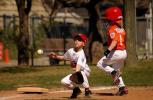
The specialized movement phase typically begins around age seven when children begin to develop a keen interest in sports. Proper development of fundamental movement skills combined with more precise movement skills are necessary to be able to efficiently develop specialized movement skills.
Strength
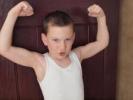
Muscular strength is the ability of the body to exert a maximum force against an object external to the body in one maximum effort using the body's muscles. Children do much to enhance their physical strength by engaging in daily active play.
Temporal Awareness
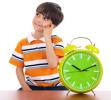
Temporal awareness is the development of an internal time structure that recognizes the relationship between movement and time. People are enabled to efficiently coordinate movements of the eyes and limbs.
Upper Body Strength

Upper body strength is the ability of the body to exert a maximum force against an object external to the body in one maximum effort of the upper body muscles. Upper body strength is important for the everyday demands that are placed on the arms, shoulders, and back.
Vestibular Coordination

The vestibular system is the parts of the brain and inner ear that process the sensory information involved with controlling eye movements and balance. The receptors located within the inner ear respond to gravity and detect motion and change of head position. They interpret speed and direction of movement, relationship to gravity, and impact balance, posture, and bilateral coordination.
Visual Perception
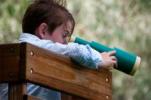
Visual perception is the ability to interpret and understand the information that comes through the eyes as a response to the light that shines in them. It is a dynamic process that identifies, organizes, interprets, and understands what is seen. It integrates sensory and motor information generated by the brain and body to derive meaning from it and direct movement.

